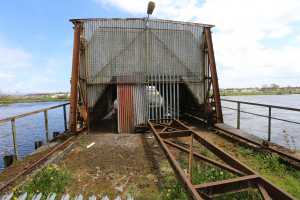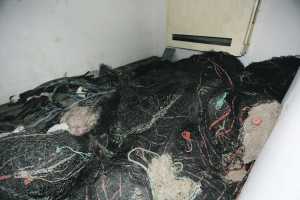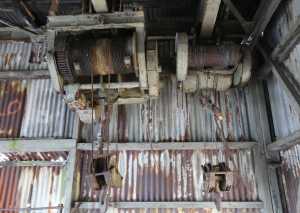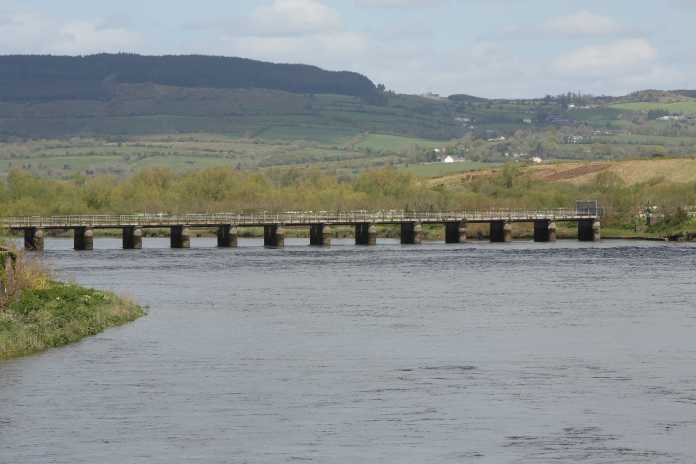

LIMERICK City and County Council have purchased Thomond Weir and its fish packing facility from the ESB and now have plans for a footbridge linking the Northside of the city. Limerick Post reporter Alan Jacques visited the site.
THE staff at the fish processing plant adjacent to Thomond Weir must have had the best diet in Limerick and probably the highest IQ as well!
Located 500 metres north of Thomond Bridge, the weir has been disused now for almost four decades. But between 1940 and 1978 it was a bustling hub of productivity.
Spanning the River Shannon from Brown’s Quay in Thomondgate to its east bank in St Mary’s Park, the 484-foot long reinforced-concrete structure was built in 1938, just 2km downstream from Lax Weir.
Under the statutory control of the ESB, Thomond Weir was used to monitor the number of salmon passing upstream and to catch some for commercial purposes.
The weir is made up of service gangway across 19 horizontal spans, 18 of which contained a crib in which salmon and eels were trapped. Metal panels would be dropped into vertical slots comprised with two-inch gaps that enabled the water to pass through but not the fish.
Along the gangway then ran an electrically-powered ten tonne crane with a 19-foot lift for emptying out the catch of the day for counting or commercial use.
By 1957 electrodes were embedded in all cribs. A current passed through the devices to stun and kill the fish, as electrocution was believed to be better for retaining the fish’s appearance as well as its taste and keeping qualities.
So it’s obviously better to fry than grill!
Sadly, over the years, fish numbers have experienced a long-term decline on the River Shannon.
A total of 23,322 fish were counted through Thomond Weir in 1963. This fell to 1,904 in 2003 when stocks were counted at Parteen and Ardnacrusha — only 839 of which were wild salmon.
Alongside the weir is a flat-roofed, two-storey reinforced-concrete building which served as a fish packing plant and first floor offices. It was designed by leading Dublin-based architects Robinson & Keefe who embraced modernism and contemporary building techniques.
The disused weir now looks likely to be reborn as a pedestrian and cycle footbridge over the River Shannon from Thomondgate to St Mary’s Park on King’s Island.
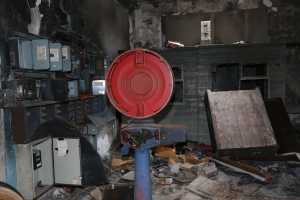
The Limerick Post visited the weir this week to take one last poke around before council staff commences their preliminary site investigations to determine the viability and capacity of the footbridge project.
In its bustling days of industry the processing plant must have stank of fish. Thankfully it hasn’t lingered.
Now it is a dark, dank reminder of the hopes and aspirations of the fledgling Irish Free State. I am told the structure of the fish packing building breaks from the architectural styles of the past and is a perfect example of the contemporary ‘Modern Movement’.
I’ll have to take senior executive architect for Limerick City and County Council, Seamus Hanrahan’s word for it. He is very passionate about the building and indeed the modern architectural movement of the early twentieth century.
Seamus is clearly impressed, but most of his impassioned exaltation goes over my head. And well, he’s the expert, so I’m going to have to take his word for it when he assures me that Thomond Weir captures the spirit and energy of the ‘Modern Movement’ as he picks out unique structural techniques and building styles.
The fish processing building was once the base for ESB Shannon Fisheries. Its first floor offices are now in rack in ruin. The upper administration suite has obviously seen much antisocial behaviour and witnessed acts of wanton vandalism down the years.
Graffiti is scrawled on every wall.
“Never forgotin by the boys in Thomondgate,” reads one cloddish scribble.
The fish processing plant has a more ghostly feel.
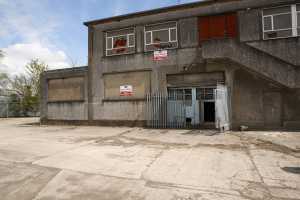
Wall to wall fishing nets and weighing scales and crates for packing fish litter the factory floor. It’s like those who worked here simply downed tools and left, but you can almost sense their presence still in the shadows.
The freezer room is filled with stacks of boxes, which interestingly, have ‘produce of Canada’ written across them, which rouses fits of giggles from all present.
The fish packing plant is a “versatile” space, which could be used in the future as an exhibition space or offices, I am told.
Abandoned since 1978, the fish on the River Shannon have had free passage up and down the waterway since Thomond Weir’s demise.
But with plans now afoot for a river crossing for pedestrians and cyclists, this relic of twentieth century architecture will soon open up the Northside of the city to all.
by Alan Jacques



